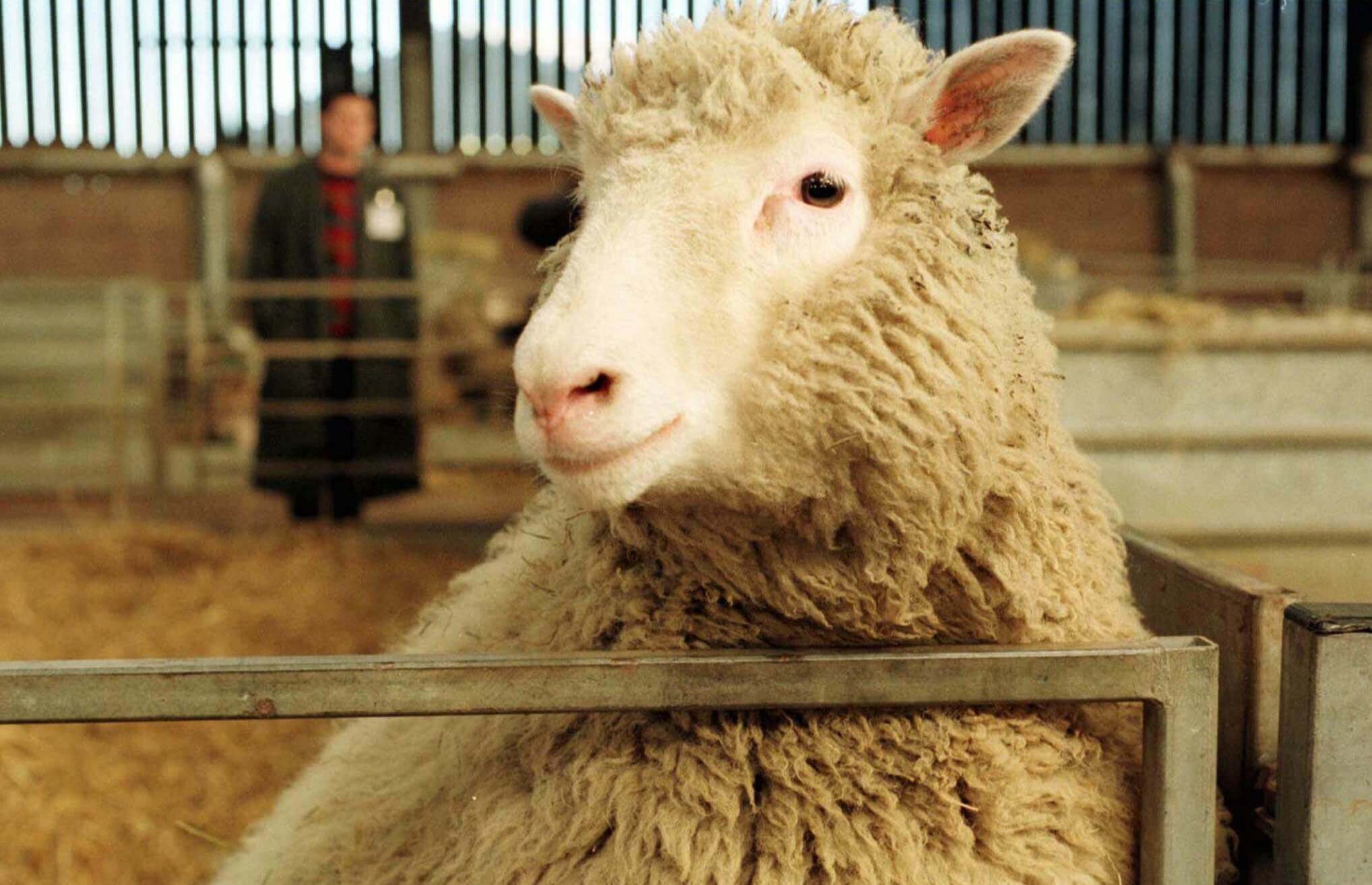Cloning 101

Take a look back at the science of cloning, for both therapeutic and reproductive use
 Dolly the Sheep Related Links |
While cloning may seem like futuristic fiction, the science has actually been around for more than 80 years. The basis of cloning devised by Dr. Hans Spemann in 1938 involved removing the nucleus from an unfertilized egg and replacing it with the nucleus from another cell. This nucleus then became the genetic pattern for the cloned animal.
But the progress for cloning was slow throughout the 20th century; the ideas were there, but the technology was lacking. It wasn't until the early 50s that scientists discovered the structure of DNA, an essential component to the science of cloning. Progress throughout the 70s and 80s was filled with trial and error; learning about gene splicing, in vitro fertilization, and embryos—all vital pieces of the cloning puzzle. In 1984, Dr. Steen M. Willadsen from Denmark became the first person to successfully clone a mammal. He cloned a lamb from a developing sheep embryo cell.
Two Decades of Cloning Breakthroughs
Throughout the 1990s, scientists copied Willadsen's method for cloning other animals. Breakthroughs in the later 90s are credited to Drs. Ian Wilmut and Keith Campbell from the U.K. In 1995, they created the world's first two cloned sheep from embryo cells. Building on this accomplishment, they then created Dolly, the world's first sheep from adult cells. Polly came next in 1997, and she was special: the first sheep with a human gene in every cell of her body. The two scientists were given patents for the technologies used to clone Dolly and Polly.
The 2000s were filled with cloning achievements. Once the method became more standardized, scientists around the world started experimenting with a variety of animal cloning. Some notable clones are Injaz, the camel clone from Dubai; and Got, the clone of his father, a famous fighting bull in Spain. To see a more detailed list of cloning achievements see cloning milestones.
How it's Done
In recent years, the method has adapted to fit the species or the situation. The DNA in the nucleus of a single organism holds all the genetic information needed to clone a species. Cloning is about accessing that nucleus and introducing it to stem cells, which are blank cells that copy the information they are given. Meaning that once a nucleus from another animal is introduced to a blank stem cell, it will start to generate the cells needs to make that animal. This method is called Somatic Nuclear Transfer (SNT). There are other ways to clone as well, but SNT creates the purest clones.
A New Era of Cloning
The outlook for cloning has changed in recent years. Scientists are now hoping that their cloning abilities can help move species off the endangered list and, in some cases, out of extinction.
In 2011, talk of cloning the critically endangered northern white rhino began, but didn't become actionable until 2016. Scientists now plan to take the eggs of the last two remaining females and through the use of in vitro fertilization (IVF) and stem cell technology, create embryos that can be implanted into a surrogate rhino mother from another rhino species.
There is also hope of bringing animals out of extinction. In 2011 and 2015 there was talk of attempting to clone the woolly mammoth and the cave lion, both animals died out after the ice age ended. Carcasses of the animals have been found frozen in rivers and the hope is that the bone marrow will contain viable DNA for cloning. With the mammoth, scientists plan to use an Asian elephant as a surrogate and with the cave lion, they will use an African lion. Ideally, a surrogate should be similar in size and build, but ice-age animals were considerably larger than today's creatures. Thus far, in both cloning cases, the scientists have not yet been able to access enough viable DNA.
Brazil is a notable country because they are taking steps to clone certain animals before they are endangered. Empraba, Brazil's agricultural research agency, chose eight species of animals to clone, all from the tropical savannah region. These particular species were identified as prone to collapse in the near future. Scientists plan to keep the cloned animals in a reserve because they lack the genetic variability to be released into the wild. The eight species include jaguars, maned wolves, black lion tamarins, bush dogs, collared anteaters, gray brocket deer, bison, and coati.
Concerns About Cloning
With advancing technology, cloning will continue to grow and improve. The hope is that cloning can save animals that are close to extinction. All is not rosy in the world of cloning, however. Conservationists, for example, believe that the money spent on cloning should go into protecting the animals that are still alive. In the case of the northern white rhino, conservationists point out that the problem of poaching needs to be solved before more rhinos are made; the animals have been hunted to near extinction for their extremely valuable horns, which are sold on the black market.
There are ethical questions to be considered as well. The technology exists and is improving every day. What was considered the stuff of science fiction a few short decades ago is now understood as an acceptable part of our world. Many species are being successfully cloned, what about the human species? Should it be forbidden? Should cloning be a personal decision? Should women be allowed to choose? Should parents who are unable to have biological children be able to have cloned ones? Would it be OK to clone a person to save the life of another? Should we be allowed to play God? These are just some of the troubling questions that this still-emerging science provokes.
by Katherine Schauer







